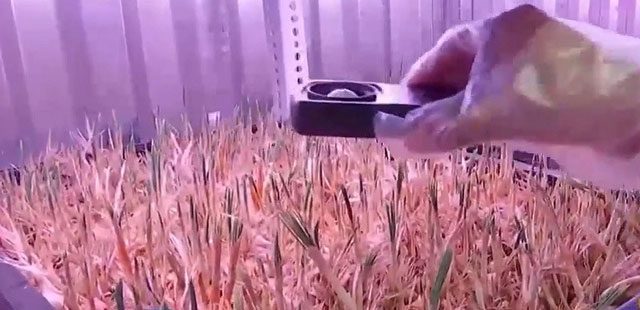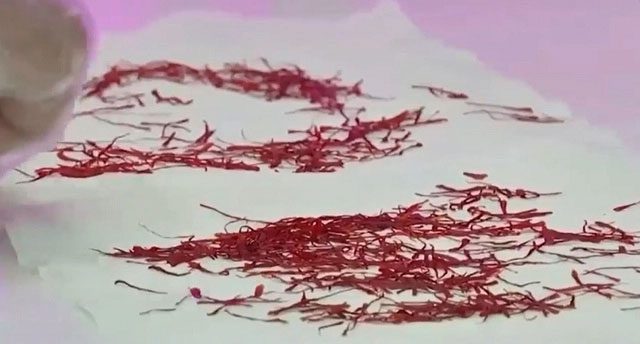Every October, the region of Kashmir (India) is enveloped in a stunning purple hue from the vibrant saffron fields. The saffron flowers are not only beautiful but also incredibly valuable due to their significant health benefits derived from the flower’s stigma. In addition to traditional farming methods, an Indian software engineer has devised a way to cultivate saffron in containers.

Saffron stigmas grown in a container.
A used container in Pune, Western India, has been transformed by Sailesh Modak, a software engineer, into a saffron farm. He mentions that growing this flower requires a lot of time and patience. His ambition is to cultivate saffron plants that share characteristics with those grown outdoors in Kashmir, the world’s second-largest saffron producer after Iran.
To achieve his goal, Sailesh Modak brought seeds from Kashmir and employed modern farming techniques—aeroponics. Aeroponics is a method of growing plants where the roots are suspended in the air, and the plants absorb nutrients from a solution delivered to the roots through misting. Within just over a month, he has successfully cultivated saffron over an area of nearly 15 square meters.

Currently, 1 kg of Kashmir saffron is priced at approximately $3,628.
“We started planting saffron at the end of August, and by the end of September or mid-October, the plants begin to flower. We successfully harvested our first crop in this container. We hope to harvest between 1 to 1.25 kg of saffron from here,” said Sailesh Modak.
In Kashmir, saffron stigmas are one of the main export items. The saffron from India generates profits amounting to tens of millions of USD for the local population. Currently, 1 kg of Kashmir saffron is valued at around $3,628 in both domestic and international markets.


















































